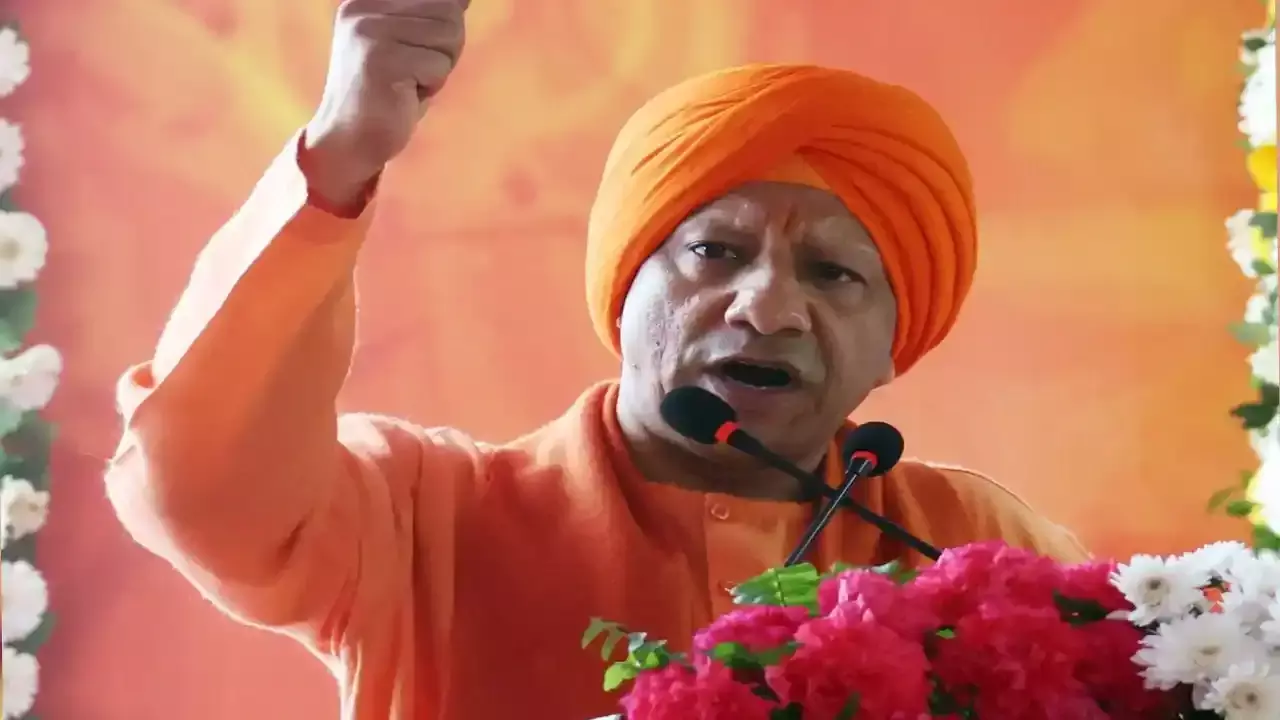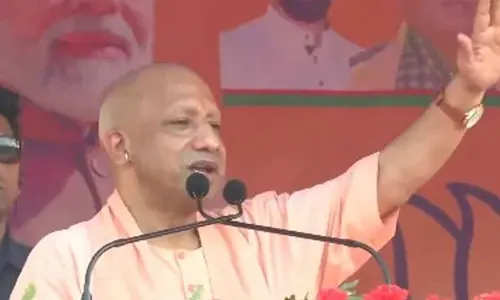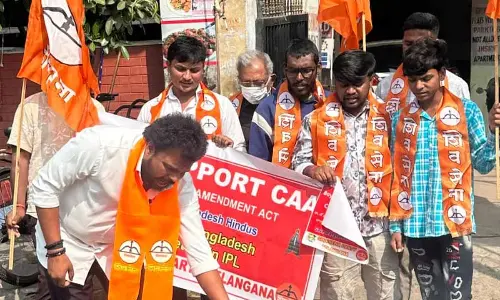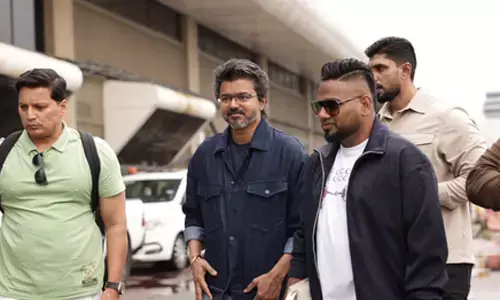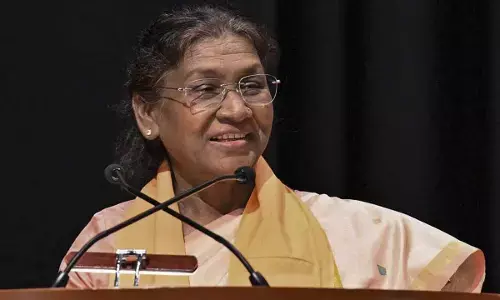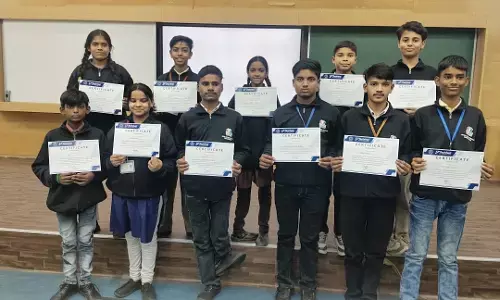Remembering the magnum opus
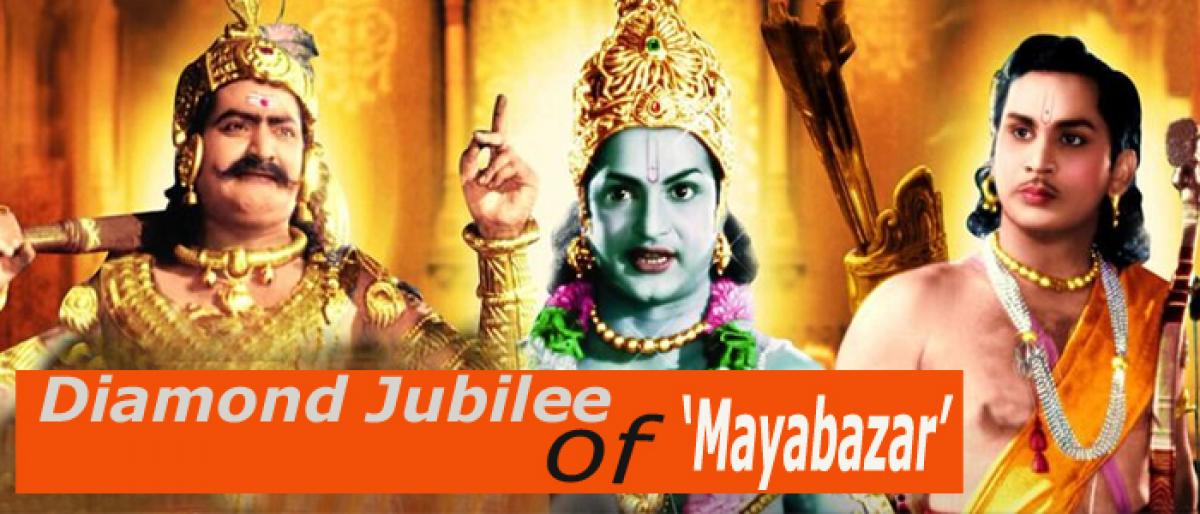
The 1957 release, ‘Mayabazar’ is turning a diamond leaf this year and also for being the centennial year of the film’s ace cinematographer Marcus Bartley, making 2017 really special. The mythological thriller is a spin-off from the Mahabharata, and in the early stages of the script it was known as ‘Sasirekha Parinayam’.
2017 marks the diamond jubilee of the film ‘Mayabazar’ and the centennial of its celebrated cinematograper Marcus Bartley
The 1957 release, ‘Mayabazar’ is turning a diamond leaf this year and also for being the centennial year of the film’s ace cinematographer Marcus Bartley, making 2017 really special. The mythological thriller is a spin-off from the Mahabharata, and in the early stages of the script it was known as ‘Sasirekha Parinayam’.
‘Mayabazar’ otherwise is a name, which was never used in the cinema, since the word “Maya” is Sanskrit and “Bazar” is an Urdu word. However, the name in its syncretic combination is a true description of the tinsel world, which is aptly known as a market (Bazar) of illusions (Maya).
‘Mayabazar’ is an improvisation of standard fiction available in the Mahabharata. Therefore it does not portray any of the major characters of the great epic. The story takes place in two places, i.e. Dwaraka, and the forest dwelling of Ghatotkacha.
It involves neither the senior Kuru clan like Dhritarashtra, Bheeshma, Drona, Vidura, etc or Pandavas. But it is on the fitness of the course of the sparse script that keeps both the senior Kuru clan, as well as Pandavas, out of the story. As per scriptures Balarama had, of course, a daughter, also known in some works as Vatsala.
‘Mayabazar’ is an improvisation on the very popular myth, though there were folktales, and Harikathas, in the earlier days, and one movie ‘Sasirekha Parinayam’ in 1938, and a play of the same name by Malladi Veknatakrishna Sarma in 1928, which is popular and staple for the famous Surabhi performances even now.
In the play, it is Narada, who plays mischief and since he was spited by Balarama, suggests the match of Lakshmanakumara, son of Duryodhana to Balarama and generally greedy Revathi. From here the story takes twists and turns and bearing the Surabhi mark of real-life performances on stage that has won Golden Nandi as well in 2005.
However, the film’s version has its own interesting innovations, and both the play and film script keep the major Kuru clan and Pandavas out of the plot. The credit for the directorial trick along with many others goes to Kadiri Venkata Reddy, known as KV Reddy.
The story is an offshoot of the Mahabharata and takes place mostly during their “vanavasa” period since they were banished to the forest after their loss in the game of dice.
These developments in Hastina or Indraprastha are detailed in the sidelines by the characters, and the ups and downs of Pandavas are introduced ingeniously into the dialogue and reported in detail by different characters.
Compared to this spin-off, though an interesting one to read, and more riveting one to watch as a celluloid treat, in the Mahabharata the real marriage of Abhimanyu does not take place until the time of “Ajnata Vasa” that is living incognito, by the Pandavas at King Virata’s kingdom. During this phase, only at the end, in the Virat Parva sub-section 4 ( 70-72) Uttara’s marriage with Abhimanyu is conducted.
It is Srikrishna, who brings the Yadava chiefs, Subhadra, and Abhimanyu to Matsyadesa, to greet the Pandavas and Draupadi, who are now out into open as the 12 years of forest dwelling and one year of living in concealment is completed.
The author of Mahabharata, Veda Vyasa goes to the theme of “Mangalaaaraambha”, “Mangalamadhya” and “Mangalaantaani” concept, and shows that the marriage of Pandava scion Abhimanyu was conducted with Princess Uttara, which in one way starts the repolarisation of power, in favour of Pandavas, so that they can bargain from a position of strength with Kuru rulers for their fair share.
‘Mayabazar’ is an ingenious extension of celluloid dimensions, and its presentation has turned the movie into a syllabus to the students of the film craft, technicalities, editing, special effects, costumes, art direction, songs, dialogues and more. There was simply nothing that went haywire or wrong with the movie, and despite watching it umpteen times, the audience gathers and demand an encore, always.
And the credit for this goes to the cinematography of Marcus Bartley. For in a movie, it is often the eye of the camera that is the eye of the director. In those days without video assist; the director and cameraman became one soul in two bodies, and their sync is something to understand from the most harmonious shots.
Leaving aside the authenticity of the story of ‘Mayabazar’, we have to grow with the 1957 celluloid magnum opus, which still lives through the camera work of Marcus Bartley, and every frame reminds us of that gifted director KV Reddy, whose storytelling talent through the camera was simply superb. Bartley specialised those moonlight scenes in songs, and garden backdrops, river boating in ‘Mayabazar’, which as per story is a full moon night, but it was actually shot in the noon at Ennore river.
It is said Marcus had always kept different size of full moon discs, painted with a rabbit and a pale stain on the face of the moon, and he very judiciously decided always that in the studio at what distance and height these moon discs are to be arranged and many times took more than one hour to fix the coordinates of the disc.
Basing the height and distance, his lighting adjustments were made, to give the feel of the character going into trance in the bewitching environs. For the diffusion of light in the interior, around the character, on the furniture, indoor shot, or for the light to reflect believably in the trees and foliage, fountains, and pavements, care was taken by the camera wizard and it had to be explained frame by frame.
He wielded camera for many more films and received National Award for ‘Shanti Nilayam’ in 1969. He was also known for his brilliance in National Award-winning Malayalam film ‘Chemmeen’. Born on 22 April, 1917 to parents Dorothy Scot and James Bartley, he had one sister and three brothers.
Married to Pauleen Teresa Garside, he had four children and was behind the camera for successful movies like ‘Patala Bhairavi’, ‘Missamma’, ‘Gundamma Katha’, ‘Appu Chesi Pappukoodu’ among others. Much into camera maintenance, and who kept unto himself, this legend of a man breathed his last on March 14, 1993.
To make Ghatotkacha land in Dwaraka, a series of his miniatures were pre-shot and used to bring the effect, when used in succession. Dwaraka was a set made by Bartley, in which no house resembled another. After the rehearsals were over, and the actors were ready for the final shot, the workers used to run to bring fresh branches from trees, so that the interior around the character enhanced to the optimum in black and white. He liked the black and white. His work is a sincere tribute to the duality of colourless depth.
Maadavapeddi Gokhale (Maa Gokhale) was the artist who drew several locations like Ghatotkacha’s forest dwelling, and it is Kaladhar, the art director, who created the actual settings. Every department contributed its best, under the demanding leadership by KV Reddy. Many do not know that when Abhimanyu and Subhadra were being driven on a chariot through the forest and the charioteer sings “Bhali bhali bhali devaa, bagunadayaa nee leelaa” it was none other than Madavapeddi Satyam who rendered the voice for the song. He not only sang but also acted in the film, which was shot in the Ercaud forest.
Likewise, when Ghatotkacha belts out a ferocious padya (poem), condemning Kauravas, “Durahamkaara madaandhulai”, it is not the bellowing SV Rangarao, who rendered it, but it was the background singer Madhavapeddi, who not only sang the padya brilliantly but also delivered the preceding dialogue, in praise of his fathers – the Pandavas, which is a lengthy one.
It was as per the directives of KV Reddy, that the pace and mood of the powerful dialogue and following verse were not be broken. The filming standards of “Vivahabhojanambu”, were much ahead of its time and the song involves much of trick photography.
In the dialogue department, Pingali Nagendra Rao, used the vernacular to the cutting edge effect, in the cinema script, and each dialogue was a roaring success. Influence of Gurajada Apparao is quite evident in the way he coined new words for Rakshasas to use.
And while searching for Sasirekha, Ghatotkacha, unable to recognise her amidst several others, he surmises “Now I have fallen in a fix like our greater dad Hanumanji” comparing Hanuman’s confusion while he was searching for Sita at Ashoka Vatika. Gurajada wrote in ‘Kanyasulkam’ “To be or not to be – we have fallen in a fix like Shakespeare”.
The digial remastering and colourisation of the original black and white film at a cost of seven- and-a-half crore was a worthy project, and though very modern, it is still the soothing effect of the original upon which it is glossed over, and the magic is somewhat cosmetic, and notwithstanding the dedicated effort of the technological age, we still vote for the black and white narrative. Its unending and ever-renewing capacity to entertain the audience of every generation is marvellous.
At this diamond hour, and in the centennial moments of a great craftsman, the time-tested and honoured testimonial of the south Indian cinema, ‘Mayabazar’, is to be remembered as a project by dream weavers.








